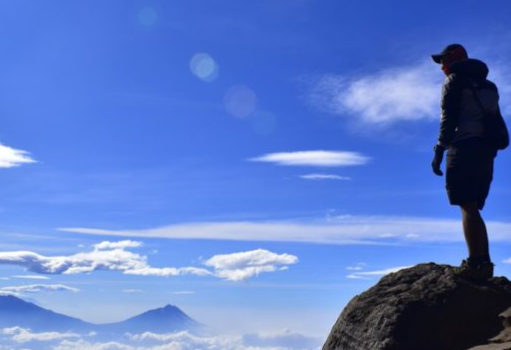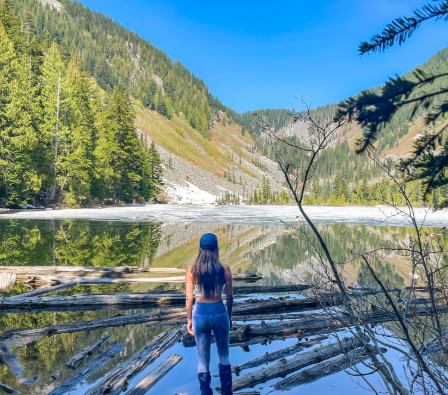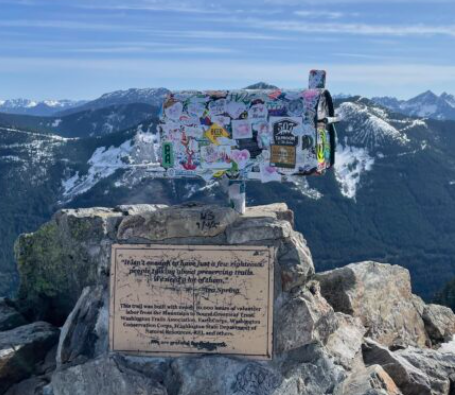
As more people embrace the outdoors, it’s essential to approach wilderness exploration with the right knowledge and preparation. While some safety tips are obvious, others might not cross your mind until you’re deep in the woods. Although I’m still learning myself, I’ve gathered a few valuable insights over time.
A few weeks ago, I took a day off to visit the mountains, a routine I’ve grown fond of. I made my way along Mountain Loop Highway, about two hours from Seattle, until I reached a secluded trailhead parking lot. The lot was completely empty, which wasn’t surprising for a chilly Wednesday in December. Plus, I enjoy the solitude of a quiet trail, so it didn’t bother me at all.
I took the usual precautions: I reviewed trail reports, informed two friends of my plans, and left a note on my dashboard with my route and emergency contact information, just in case I didn’t return as planned. Although I don’t usually leave a note, the solitude of the area made it feel like a wise move. Nature, after all, can be unpredictable, and so can accidents, so I prefer to be as prepared as possible.
A Hike Through the Woods
It was lightly raining as I walked toward the trailhead. As I approached the bulletin board, I couldn’t help but notice a poster of a woman who had gone missing while hiking on a nearby trail earlier that summer. It was a sobering reminder of how unpredictable and sometimes dangerous nature can be. The next poster I saw was a bear sighting notice for the trail, noting that the bear was “non-aggressive.” While that didn’t exactly calm my nerves, I continued on. I try not to let fear dictate my actions, and this was no exception.
The dense trees made the already gloomy day feel even darker, adding an eerie atmosphere to the hike. I gripped a sharp stone in one hand and my keys in the other, staying alert in case I needed to defend myself. After what seemed like an endless series of switchbacks, I stopped, realizing I was no longer enjoying my hike. Here I was, on what should have been a peaceful day in the mountains, yet I was gripped by unease, clutching a sharp rock.
I stood there, debating whether to continue or head back. On one hand, I had driven all that way, and it seemed logical to push on. But on the other hand, the weather was dreary, and the dark forest didn’t exactly feel welcoming. My mind raced with “what if” scenarios—what if someone was hiding behind a tree? What if the bear wasn’t so non-aggressive after all? I had to ask myself if pushing forward was worth the anxiety and potential risk.
After a few moments of reflection, I made the decision to turn back. It wasn’t an easy choice, but it was the right one. As I walked back to the car, I didn’t feel victorious, but I did feel a sense of relief. Sometimes turning back can be just as challenging as continuing, but it’s important to listen to your instincts.
A Safer Alternative
Back at the parking lot, I drove to a more familiar trail that I knew would be less isolated. The trailhead had a few cars parked, and as I began my walk, I felt a renewed sense of comfort. Hiking should be about enjoying the outdoors and clearing your mind, not about unnecessary anxiety or risk. I realized that there’s a fine line between pushing yourself and being reckless, and I learned that day to respect that boundary.
The morning didn’t go as I had planned, but I’m grateful for the experience. Would I have been fine on the first trail? Perhaps. But I’m proud that I listened to my gut and turned back. It’s a reminder that it’s okay to reassess the situation and make the smart choice, even if it feels like giving up.
Reflecting on Tragedy
This personal experience of reassessing my situation took on new meaning after hearing about the tragic deaths of two Scandinavian women in Morocco. They were adventurous souls who loved the outdoors but were sadly murdered by extremists. Their story left me with a mix of emotions: sadness, guilt for living a comfortable life, and inspiration from their fearless spirits. It reminded me that there are risks everywhere, and it’s important to stay aware of our surroundings.
I’ve traveled solo across several continents, and I try to stay vigilant. The world is full of kind, well-meaning people, but unfortunately, there are also dangers. It’s not about where you are or the people you encounter—it’s about human behavior, which can be unpredictable.
Despite the recent tragedy, I still long to explore places like Africa, Iran, and the Middle East. However, I’ve learned that sometimes it’s better to travel with others or to take more precautions. I’ll eventually visit these destinations, but I’m okay with waiting until the right time.
Risk-Taking with Caution
As someone who loves a good adventure, I’m not typically the type to follow all the rules. I’ve made spontaneous decisions that often lead to memorable experiences, but I also know it’s important to acknowledge my limits. It’s not a sign of defeat to take a step back when necessary—it’s a sign of wisdom. For now, I’m content with my travel plans and staying aware of my own boundaries.
Practical Outdoor Tips
If you’re heading into the wilderness or traveling solo, here are a few tips to keep in mind for your safety:
- Plan Ahead: Make sure someone knows where you’re going and when to expect you back. I always text a friend before heading out.
- Gear Up: A well-stocked pack is essential. I always carry a first-aid kit, extra layers, a lighter, and a pocket knife. In winter, I add microspikes and an emergency poncho.
- Use Technology: Apps like AllTrails are great for mapping your route and staying on course, even offline.
- Stay Prepared: It’s always good to carry essentials like a lighter, matches, or even a can of beer. While it might sound odd, beer can be a useful survival tool in emergencies!
- Know Your Limits: If you’re not feeling safe or comfortable, don’t hesitate to turn back. It’s better to be cautious than risk a dangerous situation.
Conclusion
While it might seem like a lot to consider before embarking on an adventure, taking the time to plan and be prepared can make all the difference. The wilderness is beautiful and full of life, but it’s also unpredictable. By taking a few simple precautions, you can ensure that your time in nature is both enjoyable and safe.








